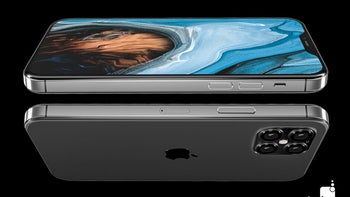Here is what Apple is doing to reduce its reliance on Samsung

Call it an attempt to diversify its supply chain or a way to lessen its reliance on arch-rival Samsung, Apple is looking to ink a big deal with LG Display according to sources cited by the Nikkei Asian Review. These sources say that LG Display will produce 20 million OLED panels for the iPhone this year, 5 times the number that it delivered last year. Samsung, on the other hand, is expected to deliver 60 million OLED panels to Apple this year, a slight increase over last year's total.
Apple increases its order for OLED panels from LG Display by a factor of five
As usual for Apple, LG Display went through a trial period before being entrusted with the production of such a large order. Back in 2018, LG Display churned out 20 million LCD screens for the 6.1-inch iPhone XR but shipped only 4 million OLED displays to Apple. Based on the report from Nikkei, it would appear that LG Display was responsible for only four million OLED panels again last year for the iPhone 11 series.

If you own an iPhone 11 series phone, odds are you're looking at a OLED panel made by Samsung
LG Display has reported six consecutive quarters of red ink but the company's CFO, Suh Dong-hee, said that its finances will improve during the second half of the year. "We plan for our dedicated smartphone OLED panel factory in Paju to operate at full capacity," he said. Of course, shipping 20 million panels to Apple surely helps. LG Display failed to improve its poor yield rate for AMOLED panels last year which is why Samsung was the recipient of a $7 billion contract with Apple (more on that below). After last summer, LG Display improved its yield allowing Apple to feel confident enough to turn over a quarter of its 2020 AMOLED needs for the iPhone 12 family to it. If Apple is happy with the OLED panels that LG Display delivers, it will be interesting to see how much business Samsung gets from Apple next year for the iPhone 13 line.
Last quarter, Apple had to pay Samsung a reported penalty of $950 million for failing to order the number of panels from Samsung as called for by the terms of their contract. Apple reportedly contracted with Samsung to deliver 100 million panels at a price of $70 each, or the aforementioned $7 billion. Yoshio Tamura, president of Asian operations at U.S.-based Display Supply Chain Consultants, said that this contract came about because of Samsung's large share of the OLED market. British research firm Omdia says that Samsung has a dominating 81.3% share in the shipping of small and medium-sized OLED panels like the ones used on smartphones. LG Display comes in a distant second with a 6.7% share of this market.
Apple has supposedly been looking at using other manufacturers of glass panels including Beijing Oriental Electronics (BOE). But last month word got out that BOE had failed quality tests for Apple and Samsung. The latter was said to have asked BOE for a quote to supply it with OLED panels for next year's Galaxy S21 series.
Apple has helped to bail out its long time LCD glass supplier Japan Display. The company hurt itself by not catching the change from LCD to OLED in time. That's not to say that the firm doesn't produce any AMOLED screens for Apple because it does make the 1.78-inch display found on the Apple Watch. Considering that Apple has invested its own money in Japan Display, it might someday rely on them for OLED panels for the iPhone.
Apple is expected to unveil four new 5G iPhone models possibly on September 8th. For the first time in iPhone history, all of the new units will sport an AMOLED display. We should see a 5.4-inch iPhone 12, a 6.1-inch iPhone 12 Max, a 6.1-inch iPhone 12 Pro, and a 6.7-inch iPhone 12 Pro Max.










Things that are NOT allowed: